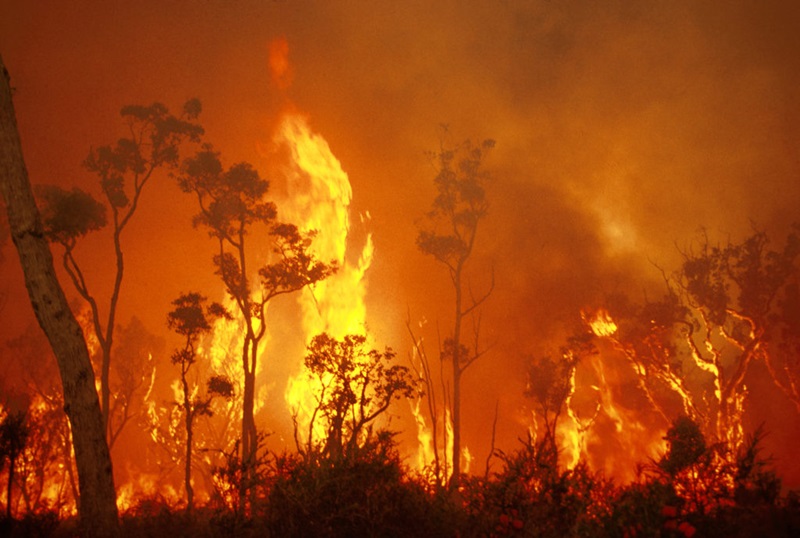Navigating Home Safety: Understanding the Significance of a BAL Report
How BAL Record Impacts Bush Fire Protection Measures
In the realm of bush fire security, the Structure Assault Level (BAL) record stands as an essential device that considerably affects the safety and security and strength of residential properties in fire-prone locations - BAL Report. The impact of a BAL assessment extends much past mere paperwork; it acts as the foundation for determining the appropriate construction criteria and fire defense measures needed to minimize the risks presented by bushfires. As communities face significantly severe fire seasons, comprehending how the BAL record forms these safety steps becomes extremely important for policymakers, builders, and house owners alike
Understanding the Bushfire Attack Degree

Importance of BAL Report Analysis

Moreover, the BAL record evaluation serves as a fundamental step in adhering to lawful responsibilities and requirements related to bushfire protection. Local councils and authorities typically mandate the entry of a BAL report as component of the preparation and structure approval procedure to make sure that homes are appropriately safeguarded against bushfire threats. Failing to carry out a thorough BAL report evaluation can result in poor protection measures, leaving homes vulnerable to devastating bushfire cases.
Building Specifications Based on BAL
A detailed understanding of the Bushfire Strike Degree (BAL) enables homeowner to carry out construction standards tailored to their details threat profile. Construction criteria based on BAL are essential in reducing the influence of bushfires on residential properties. The BAL score classifies the potential risk a home deals with during a bushfire on a scale from BAL-Low to BAL-FZ (Flame Area) Each BAL degree matches to certain building and construction demands outlined in the Australian Conventional AS3959-2018 Construction of Structures in Bushfire-Prone Locations. For instance, properties categorized as BAL-Low might only need standard actions such as clearing debris and keeping gardens, while those in higher BAL groups require even more durable steps like ash displays, fireproof products, and secured home windows. Following these building standards not only boosts the structural resilience of the building yet also boosts the general safety of citizens throughout a bushfire occasion. Home owners must thoroughly consider their BAL score and conform with the equivalent building and construction criteria content to appropriately guard their homes and occupants.
Implementing Fire Security Procedures
With the foundation of building standards based on Bushfire Attack Level (BAL) in place, the emphasis now changes in the direction of the practical application of fire defense measures to fortify homes against bushfire risks. Passive steps consist of utilizing fireproof building materials, mounting ash guards on vents, sealing voids in walls and roofing systems, and maintaining a clear area around the home cost-free from flammable plant life. By integrating both passive and energetic strategies, properties can dramatically reduce their vulnerability to bushfire occurrences and increase the security of owners.
Shielding Homes Against Bushfires
Successfully safeguarding homes versus the harmful impacts of bushfires calls for a aggressive and extensive method to fire protection actions. Property owners living in bushfire-prone areas should focus on the implementation of various techniques to boost their building's durability against wildfires. One basic facet is creating a defensible space around the home by keeping a clear zone cost-free of flammable products. This includes consistently trimming vegetation, getting rid of dead plants, and making certain a secure range between structures and trees. Installing fire-resistant roof covering materials can also dramatically lower the risk of ash strikes and direct fire call. In addition, sealing voids and vents to avoid coal breach, along with including fire-resistant doors and windows, can aid fortify the home's protection versus bushfires. Buying a trustworthy water source, such as a well-maintained automatic sprinkler or a specialized water tank, is vital great post to read for supplying water during fire emergency situations - BAL Report. By welcoming an aggressive position and incorporating these safety measures, homeowners can dramatically increase their opportunities of guarding their homes versus bushfires.
Verdict
In verdict, the Bushfire Strike Level (BAL) report plays a crucial function in figuring out the needed defense actions against bushfires. By examining the BAL, construction requirements can be tailored to minimize the dangers go to this website and ensure the security of homes in fire-prone locations. Carrying out fire security actions based upon the BAL record is essential in protecting homes from prospective bushfire threats. It is important for home owners to focus on BAL assessments and stick to suggested building requirements to improve bushfire resilience.
In assessing bushfire threat to properties, understanding the Bushfire Attack Degree (BAL) is an important component for implementing effective defense steps. On the whole, a clear understanding of the Bushfire Attack Level is vital for carrying out sufficient security actions and reducing the effect of bushfires on residential properties.
